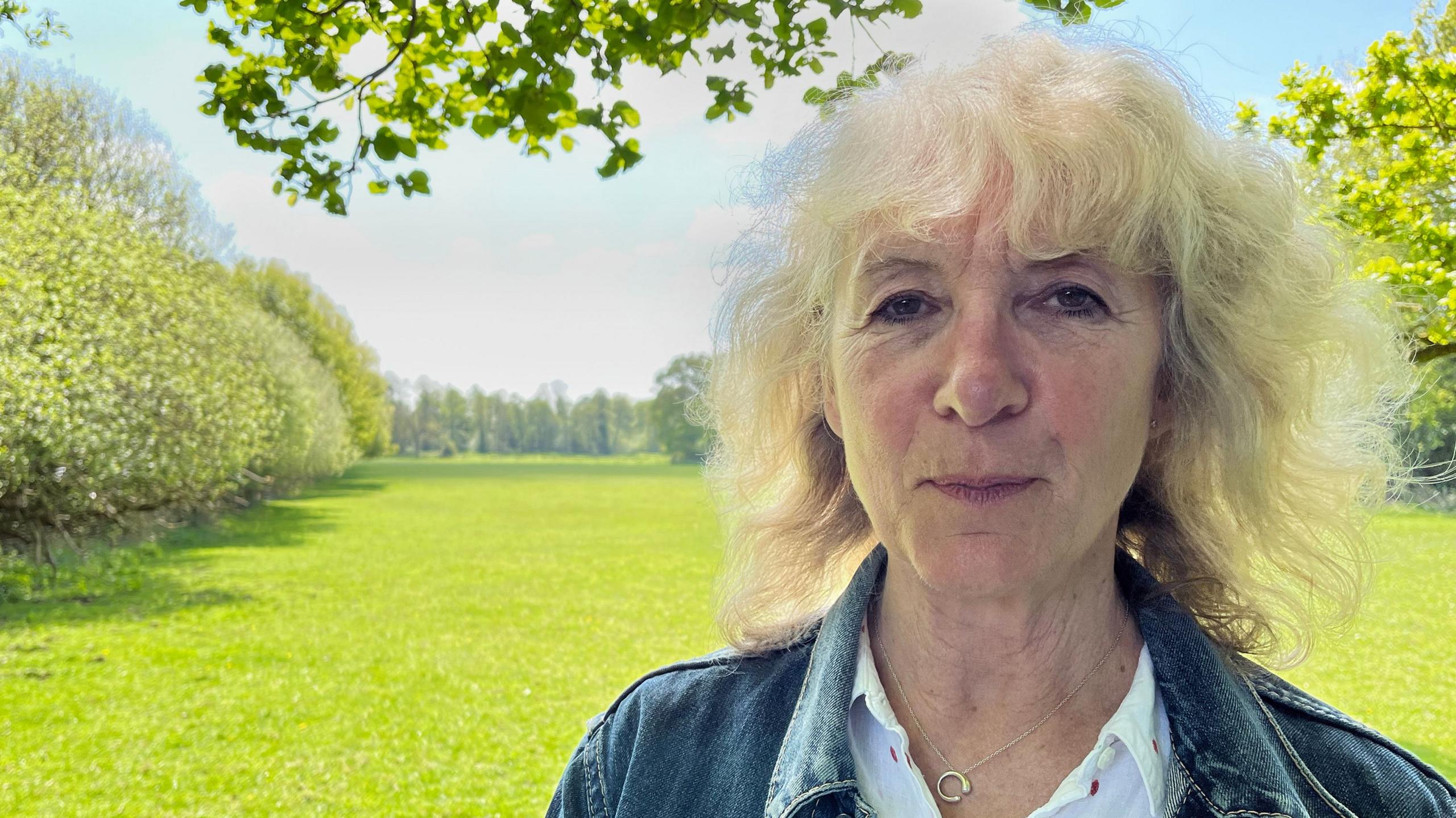Why more mega solar farms are coming to the countryside
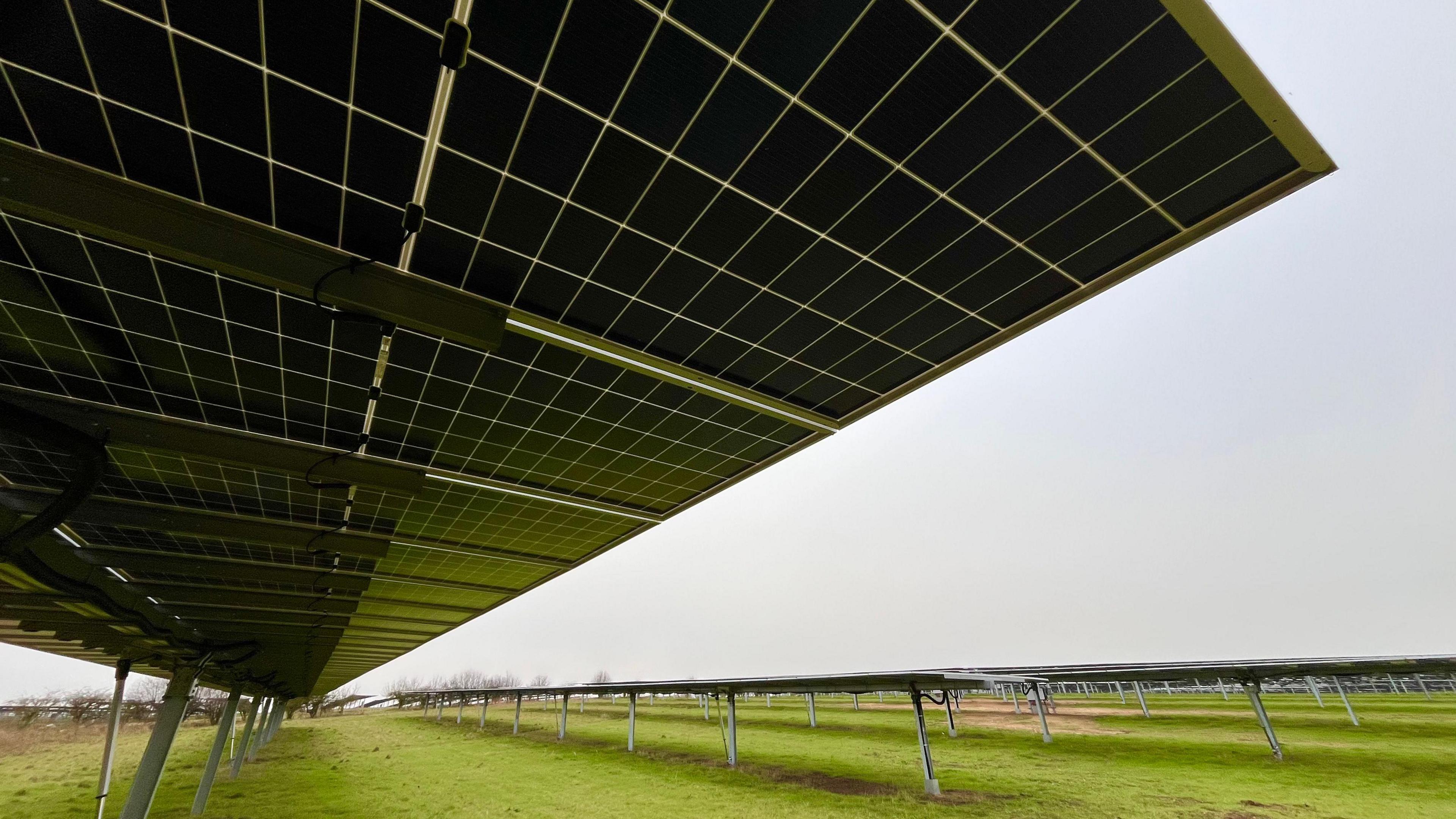
The solar industry says it expects to see more plans for large-scale solar farms
- Published
The energy industry expects more plans to emerge to convert countryside into solar farms after the government pledged to treble the UK's capacity to generate solar power over the next five years.
Critics say they will harm rural settings, but others say they are a necessary part of battling human-driven climate change.
According to the Planning Inspectorate, there are developed plans for 11 large solar farms across the East of England and Northamptonshire.
Chris Hewett, the chief executive of Solar Energy UK, said he expected the area to see more proposals over the next decade, after which development would "plateau".

People in Swaffham have been talking about proposals for two huge solar farms just outside the market town
At the Green Parrot cafe in Swaffham, Norfolk, manager Lorraine Tidnam said solar was discussed "quite a bit", especially with the "more political customers", after plans to build two large solar farms near the town were announced.
The Droves solar farm, between Swaffham and Castle Acre, aims to generate 500 megawatts (MW) of electricity and involves an area of 2,790 acres.
The High Grove solar farm could generate 720 MW and is about 4,000 acres spread over five sites around RAF Marham, Swaffham and Dereham.
Mrs Tidnam, 53, said: "The fear is that it's going to just change the environment - how it looks, the aesthetics of the countryside - forever."
Her colleague, 23-year-old Lana Lacey, supports the idea of generating power with solar panels but said "they're hard to look at".
"I just think maybe there's better ways to get energy to save the environment, without polluting it with the solar panels," she added.
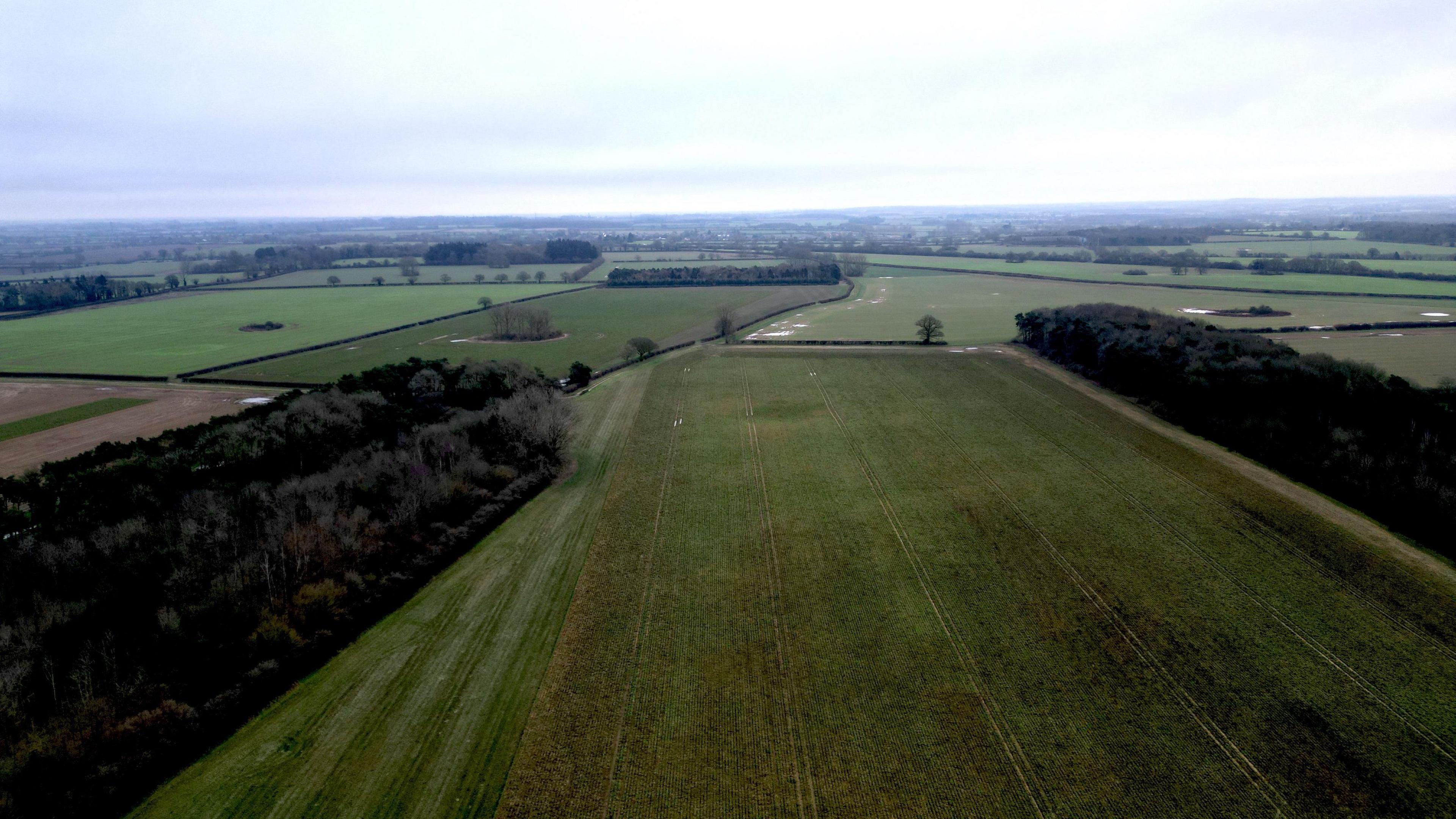
The High Grove solar farm would occupy about 4,000 acres
Lee Lawrence, 59, who owns antique shop Shabbytatt in Swaffham, said he had "heard a few moans" but "personally, I don't have an issue with it".
"When it's in a field, hidden behind a bush, you don't even really see it."
Mr Lawrence said he hoped generating more renewable energy would combat climate change.
"There's lots of news about flooding and fires and stuff like that - so we do have to do something about it. If not for us, but for future generations."
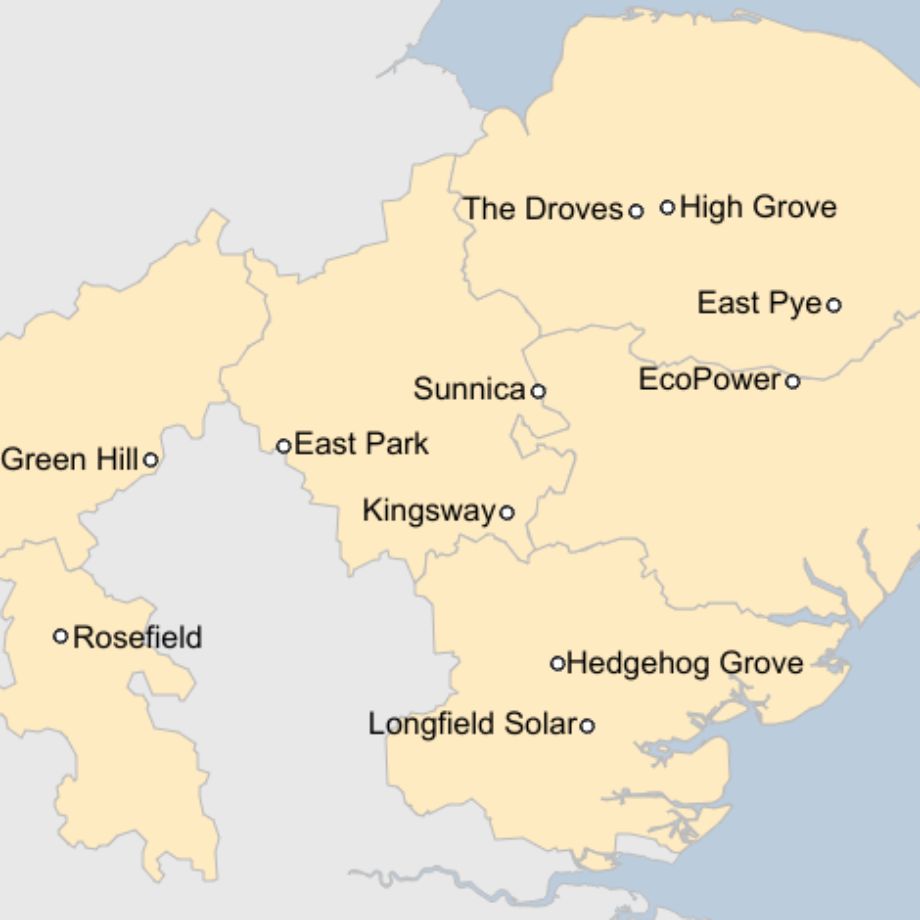
In December, the government said, external it wanted to increase solar generation in the UK from 16.6 gigawatts (GW) to 45-47 GW by 2030.
The proposals for 11 large solar farms across the East of England and Northamptonshire involve about 24,000 acres of land and could generate a combined 4.3 GW of electricity - more than the new Sizewell C nuclear power station in Suffolk, which will generate 3.2 GW.
The German energy company, RWE, is behind the plans for the High Grove solar farm.
Michael Greslow, the RWE project manager, said 47 GW of solar was a "huge number" to reach in just five years.
The "urgent need" for renewable power was driving the push towards large-scale installations, he added.
"This is very fast in terms of its deployment and delivery, so I think that's why we're seeing a number of the large sites across all regions."

Michael Greslow from RWE is responsible for trying to get planning permission for the High Grove solar farm
The biggest factor when choosing a site, Mr Greslow said, was grid capacity.
He said RWE was told there was "capacity there in the overhead line" for electricity from High Grove, but that a new substation would need to be built.
The company then approached nearby landowners for permission to use fields which met certain "environmental criteria", and 10 signed up to the project.
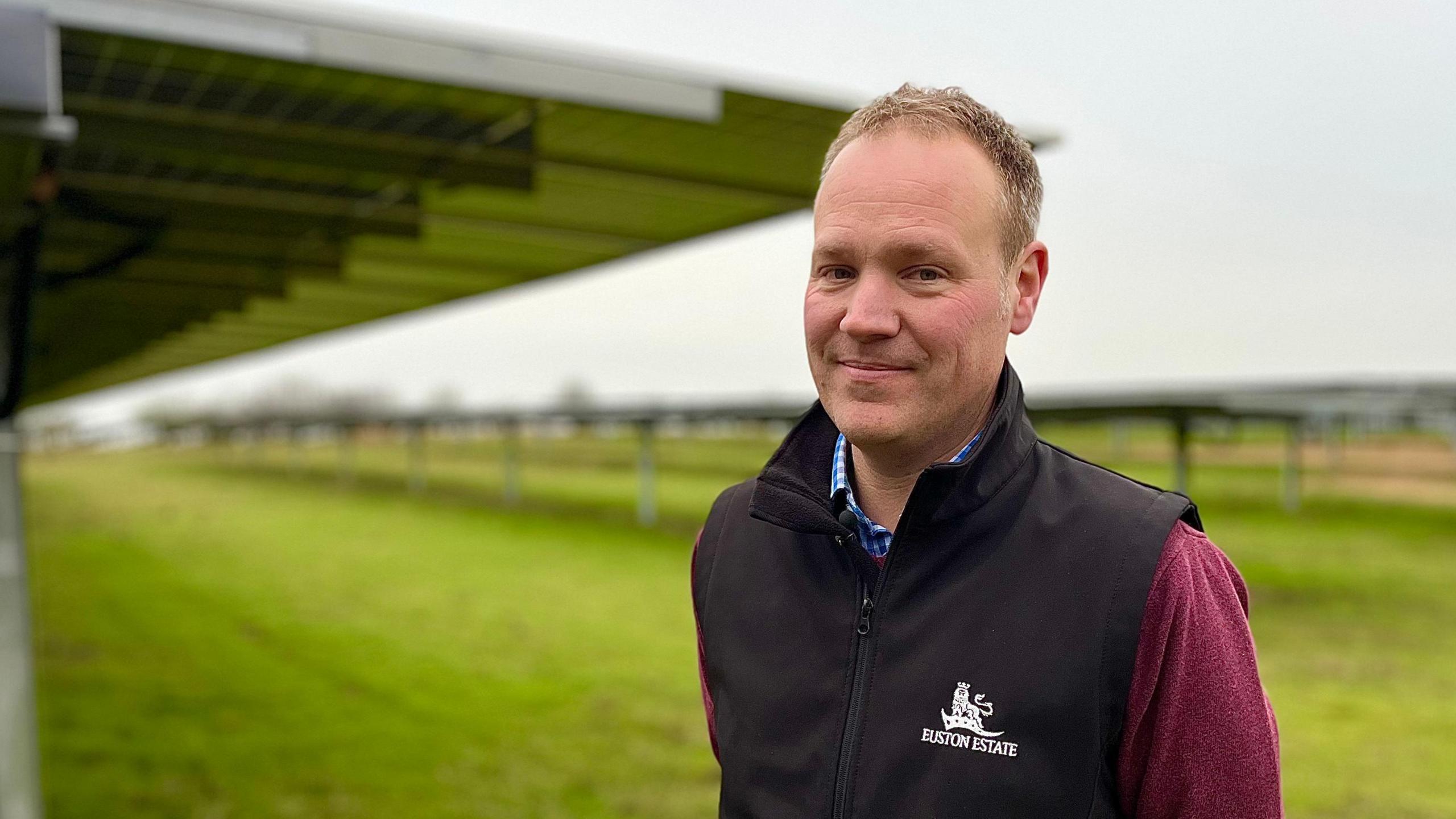
Robert Childerhouse said solar panels helped diversify how the Euston Estate made money from its land
In Suffolk the Euston Estate will eventually have 530 acres of solar panels producing enough electricity for about 30,000 homes.
Robert Childerhouse, the estate's director, said the panels will cover 5% of the estate's land but deliver 12% of its income.
"Large estates such as Euston cannot rely on its traditional sources of income any more," Mr Childerhouse said, "so it needs to look for alternative income streams."
The panels were built on "low quality land" and in "discreet locations", he added.
Listen: More solar mega farms for Norfolk?
In July 2024, Secretary of State for Energy Security Ed Miliband granted planning permission to the 500 MW Sunnica solar farm on the Cambridgeshire and Suffolk border.
Longfield Solar, a 500 MW installation near Chelmsford, Essex, received approval in 2023.
Eight other solar projects in the East and Northamptonshire are at a "pre-application" stage.
Mr Hewett, from Solar Energy UK, said the East had "great connectivity" and there was "suitable land because it's flat".
Planned upgrades to the region's electricity grid to accommodate more offshore wind would boost capacity, he added.
"The sun and the wind don't always necessarily generate at the same time and so we want to make the most of that grid capacity, then it makes sense to have other technologies connected."
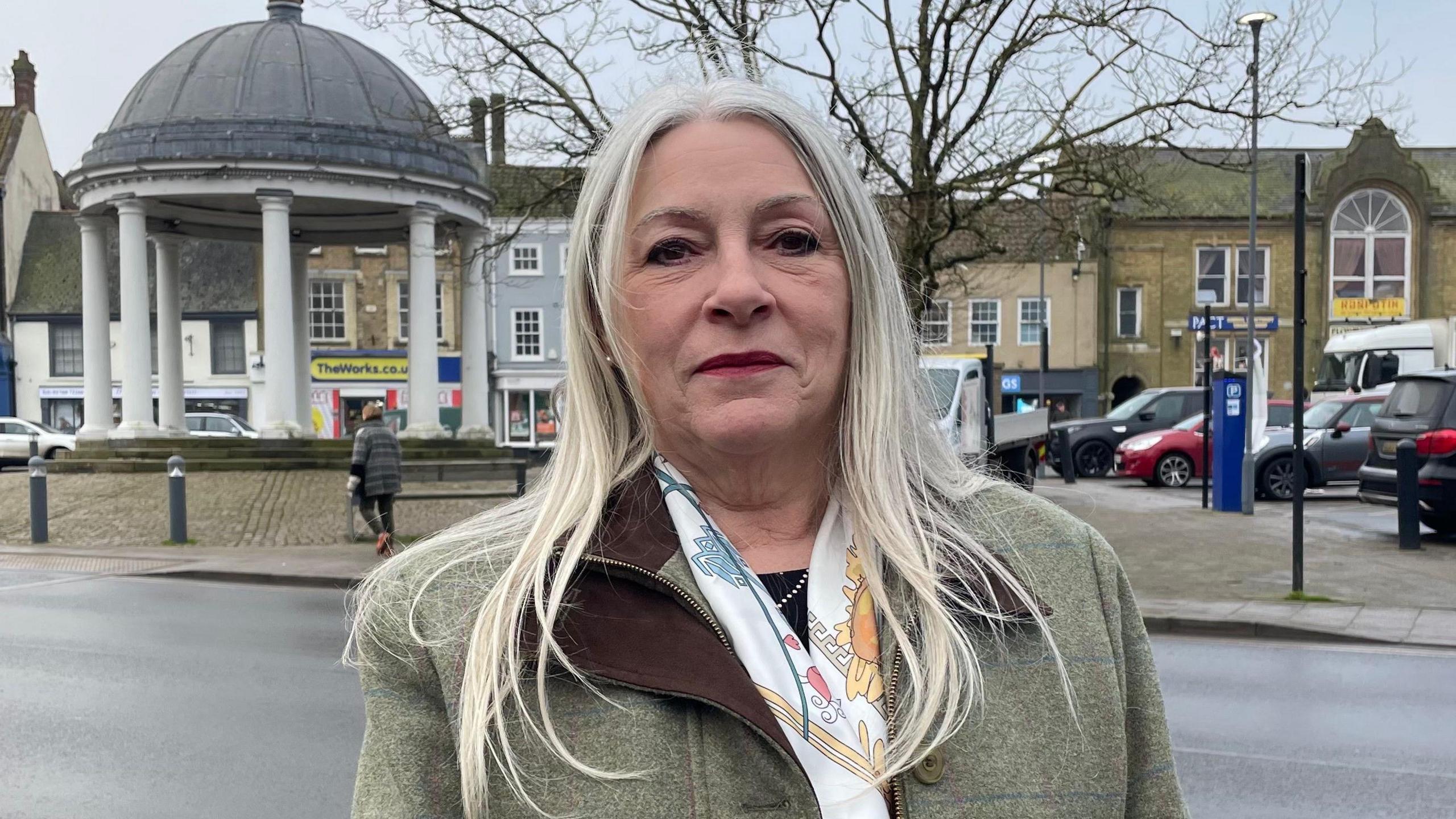
Kay Mason-Billig said there had been a "huge proliferation" of plans for solar farms in Norfolk
Kay Mason-Billig, the Conservative leader of Norfolk County Council, feared the county was seen as a "commodity" and a "convenient way of getting power to London, so you can plug your Tesla in in Camden".
She said solar farm proposals were "springing up" along a planned line of new pylons between Norwich and Tilbury Docks, in Essex, external.
"We shouldn't be taking prime land out of food production," she added.
"It's destroying our countryside, it's blighting people's lives - there's no compensation for them."
A Department for Energy Security and Net Zero spokesperson said: "Even in the most ambitious scenarios, solar would still occupy less than 1% of the UK's agricultural land - less than occupied by golf courses - while bringing huge benefits for the British public and our energy security.
"There are no hard targets for capacity in particular regions in place."
The department was also considering ways that communities who live near solar farms could benefit from them.

Solar farms would take up less area than currently occupied by golf courses, according to the government
Get in touch
Do you have a story suggestion for Norfolk?
Follow Norfolk news on BBC Sounds, Facebook, external, Instagram, external and X, external.
- Published2 January
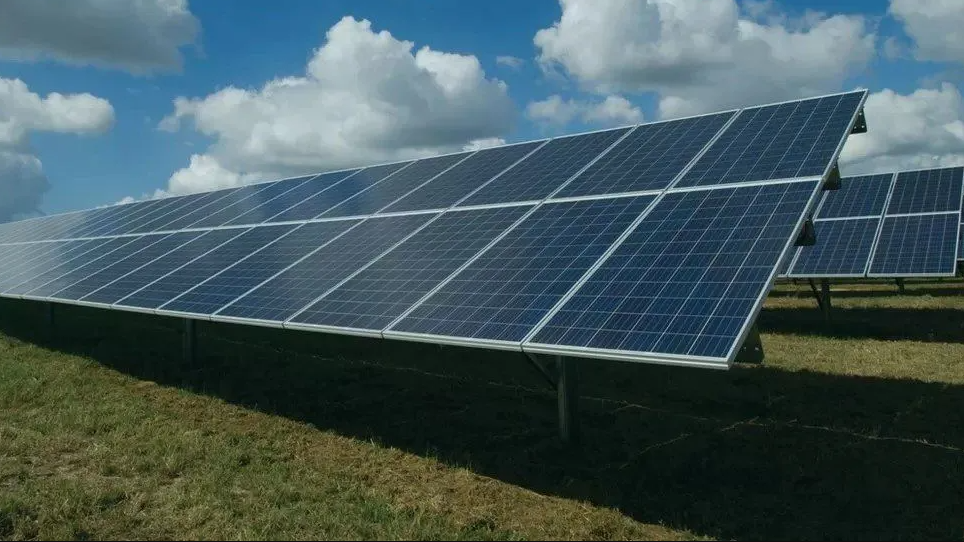
- Published27 June 2023
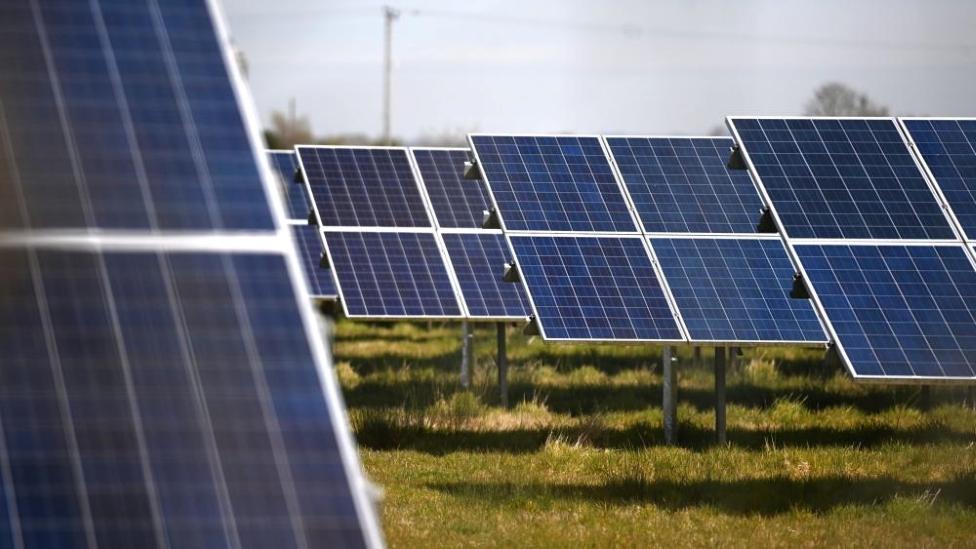
- Published16 May 2024
